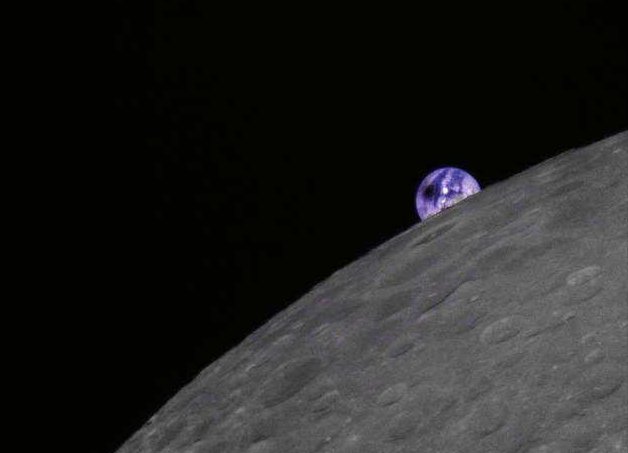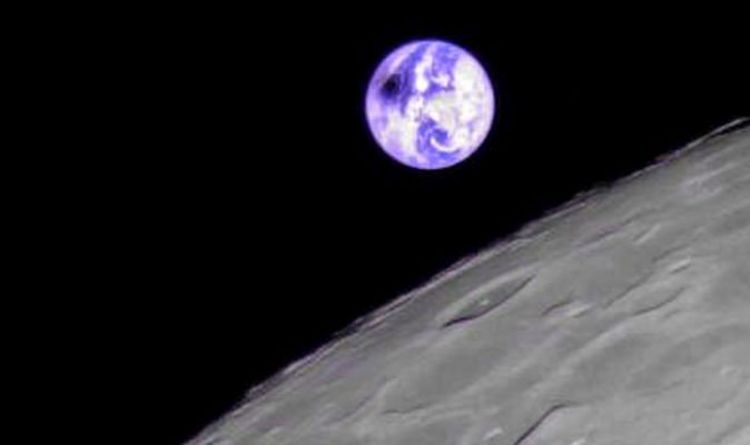
The Total Solar Eclipse And Earthshine.
The following is an extract from Wiki, where the author tries to convince us that although the Moon is well illuminated during a TSE, the Black Moon we see just appears to be black in contrast to the corona.
https://en.wikipedia.org/wiki/Solar_eclipse#Earthshine
Earthshine
During a total solar eclipse, the Moon's shadow covers only a small fraction of the Earth. The Earth continues to receive at least 92 percent of the amount of sunlight it receives without an eclipse - more if the penumbra https:\en.wikipedia.org\wiki\Penumbra of the Moon's shadow partly misses the Earth. Seen from the Moon, the Earth during a total solar eclipse is mostly brilliantly illuminated, with only a small dark patch showing the Moon's shadow. The brilliantly-lit Earth reflects a lot of light to the Moon. If the corona https:\en.wikipedia.org\wiki\Corona of the eclipsed Sun were not present, the Moon, illuminated by earthlight, would be easily visible from Earth. This would be essentially the same as the earthshine https:\en.wikipedia.org\wiki\Earthshine which can frequently be seen when the Moon's phase https:\en.wikipedia.org\wiki\Lunar_phase is a narrow crescent. In reality, the corona, though much less brilliant than the Sun's photosphere <https:\en.wikipedia.org\wiki\Photosphere>, is much brighter than the Moon illuminated by earthlight. Therefore, by contrast, the Moon during a total solar eclipse appears to be black, with the corona surrounding it.
Earthshine
During a total solar eclipse, the Moon's shadow covers only a small fraction of the Earth. The Earth continues to receive at least 92 percent of the amount of sunlight it receives without an eclipse - more if the penumbra https:\en.wikipedia.org\wiki\Penumbra of the Moon's shadow partly misses the Earth. Seen from the Moon, the Earth during a total solar eclipse is mostly brilliantly illuminated, with only a small dark patch showing the Moon's shadow. The brilliantly-lit Earth reflects a lot of light to the Moon. If the corona https:\en.wikipedia.org\wiki\Corona of the eclipsed Sun were not present, the Moon, illuminated by earthlight, would be easily visible from Earth. This would be essentially the same as the earthshine https:\en.wikipedia.org\wiki\Earthshine which can frequently be seen when the Moon's phase https:\en.wikipedia.org\wiki\Lunar_phase is a narrow crescent. In reality, the corona, though much less brilliant than the Sun's photosphere <https:\en.wikipedia.org\wiki\Photosphere>, is much brighter than the Moon illuminated by earthlight. Therefore, by contrast, the Moon during a total solar eclipse appears to be black, with the corona surrounding it.
As the TSE can be observed with the naked eye, the corona cannot be very bright. In fact the moon at this time, "by contrast", may be brighter than the corona.
"Appears to be black" Just what does this mean in plain English. The writer on Wiki obviously knows that the Moon is not black in reality, because it is lit by Earthshine, so chooses to make it "appear to be black by contrast," but gives no factual degree of illumination for either the Moon or corona. No evidence is given as to why or how this "black by contrast "could occur.
What we see is BLACK yet the Moon must be well illuminated. The black disk we see may not be the actual Moon.
"Appears to be black" Just what does this mean in plain English. The writer on Wiki obviously knows that the Moon is not black in reality, because it is lit by Earthshine, so chooses to make it "appear to be black by contrast," but gives no factual degree of illumination for either the Moon or corona. No evidence is given as to why or how this "black by contrast "could occur.
What we see is BLACK yet the Moon must be well illuminated. The black disk we see may not be the actual Moon.
Below is an excerpt from an Astronomy & Astrophysics paper which shows that during the Maunder Minimum period the corona was at an absolute minimum, or not visible at all during some recorded Total Solar Eclipes of the period. I am unable to find any reference to the Lunar disk being anything but black during this time. The astute observers would have noted if the Earthshine made the Moon's surface features easily visible.
https://arxiv.org/pdf/1507.05191v1.pdf
The Maunder minimum (1645-1715) was indeed a Grandminimum: A reassessment of multiple datasets
3.2. Solar corona during the Maunder minimum
As shown already by Eddy (1976) and re-analyzed recently by Riley et al. (2015), recorded observations of solar eclipses suggest the virtual absence of the bright structured solar corona during the MM. While 63 total solar eclipses should had taken place on Earth between 1645 and 1715, only four (in years 1652, 1698, 1706 and 1708) were properly recorded in a scientific manner, others were either not visible in Europe ornot described in sufficient detail. These reports (see details in Riley et al., 2015) suggest that the solar corona was reddish and unstructured which was interpreted (Eddy, 1976) as the F-corona (or zodiacal light) in the absence of the K-corona. The normally structured corona reappeared again between 1708 and1716, according to later solar eclipse observations, as discussed in Riley et al. (2015).Observations of the solar corona during total eclipses, al-though rare and not easy to interpret, suggest that the coronawas very quiet and had shrunk during the MM, with no largescale structures such as streamers. This also implies the decline of surface activity during the M
https://www.lpi.usra.edu/lunar/strategies/human_ex/lighting_constraints.pdf
This is a well researched document from NASA which describes in great detail the degree of Earthshine illumination on the Moon. At Lunar Midnight, or New Moon, the illumination on the Moon's surface where the Earth is directly overhead, is claimed to be 76 times greater than a Full Moon on Earth. For a comparison with Sunlight on Earth, the author states that it is approximately equivalent to the degree of light in the Southern US States in July about 8pm or about 15 minutes after Sunset.
This is a well researched document from NASA which describes in great detail the degree of Earthshine illumination on the Moon. At Lunar Midnight, or New Moon, the illumination on the Moon's surface where the Earth is directly overhead, is claimed to be 76 times greater than a Full Moon on Earth. For a comparison with Sunlight on Earth, the author states that it is approximately equivalent to the degree of light in the Southern US States in July about 8pm or about 15 minutes after Sunset.
Stunning Photos Of July 2019 Total Solar Eclipse Taken From Chinese Satellite
Orbiting The Moon
July 3 2019, the Dwingeloo Radio Telescope downloaded these eclipse photos from the Chinese lunar satellite DSLWP-B.
Where the Earth is low on the horizon the illumination is not as great as where the Earth is higher in the Lunar sky. Maximum luminosity would be where the Earth is directly opposite the Lunar position.
It is apparent that the Moon's surface is not black. It is debatable as to whether "contrast" would cause us to see a black Moon.
Orbiting The Moon
July 3 2019, the Dwingeloo Radio Telescope downloaded these eclipse photos from the Chinese lunar satellite DSLWP-B.
Where the Earth is low on the horizon the illumination is not as great as where the Earth is higher in the Lunar sky. Maximum luminosity would be where the Earth is directly opposite the Lunar position.
It is apparent that the Moon's surface is not black. It is debatable as to whether "contrast" would cause us to see a black Moon.




